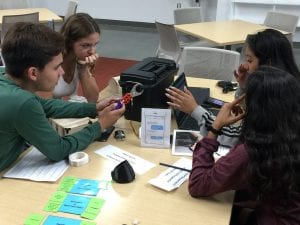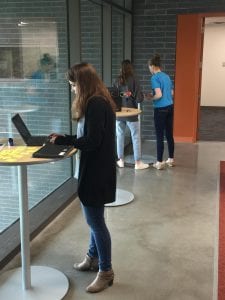What do a painter, an economist, a pastor, a planetary scientist and a dancer have in common? They are all among the recipients of this year’s 25 “genius grants” awarded by the John D. and Catherine T. MacArthur Foundation. Each winner will receive $625,000 over a five year period. The Chicago-based foundation has awarded these grants each year since 1981 to help further the pursuits of people who have shown creativity and outstanding talent, such as:
Dominique Morisseau,40, playwright
Morisseau is a NYC-based playwright who has taken the theater world by storm with her Detroit-set plays which examine “the intersection of choice and circumstance in works that portray individuals and communities grappling with economic and social change.”
Okwui Okpokwasili, 46, choreographer and performer
Okpokwasili is a NYC-based choreographer whose multidisciplinary pieces “draw viewers into the interior lives of women of color.
Lisa Parks, 51, media scholar
Parks is a media scholar at MIT studying the impact of information technologies as they spread across the globe.
Livia S. Eberlin, 32, analytical chemist
Eberlin is an analytical chemist at the University of Texas who uses mass spectrometry to “differentiate more quickly and accurately diseased from healthy tissues during surgery.”
Deborah Estrin, 58, computer scientist
Estrin is a computer science professor at Cornell Tech who is working to put the “small data” gathered in our digital lives to use in improving, for example, personal health management.
Amy Finklestein, 44, health economist
Finklestein is a MIT health economist doing novel research to show “hidden complexities” in health care and to suggest future fixes.
Gregg Gonsalves, 54, epidemiologist and global health advocate
“Working at the intersection of human rights and public health research and practice to address inequities in global health.”
Clifford Brangwynne, 40, biophysical engineer
Brangwynne is a Princeton biophysical engineer who studies cellular compartmentalization. His work has the potential “to shed light on biochemical malfunctions that can lead to disease.”
Allan Sly, 36, mathematician
Sly is a Princeton mathematician “applying probability theory to resolve long-standing problems in statistical physics and computer science.”
Sarah T. Stewart, 45, planetary scientist
Stewart is a planetary scientist at the University of California at Davis “advancing new theories of how celestial collusions give birth to planets and their natural satellites, such as the Earth and Moon.”
William J. Barber II, 55, pastor
A pastor at Greenleaf Christian Church in Goldsboro, NC, Barber has led “Moral Monday” marches outside the state capitol to advocate for causes including LGBTQ rights and voter enfranchisement.
Titus Kaphar, 42, painter
Kaphar is an “artist whose paintings, sculptures and installations explore the intersection of art, history, and civic agency.”






